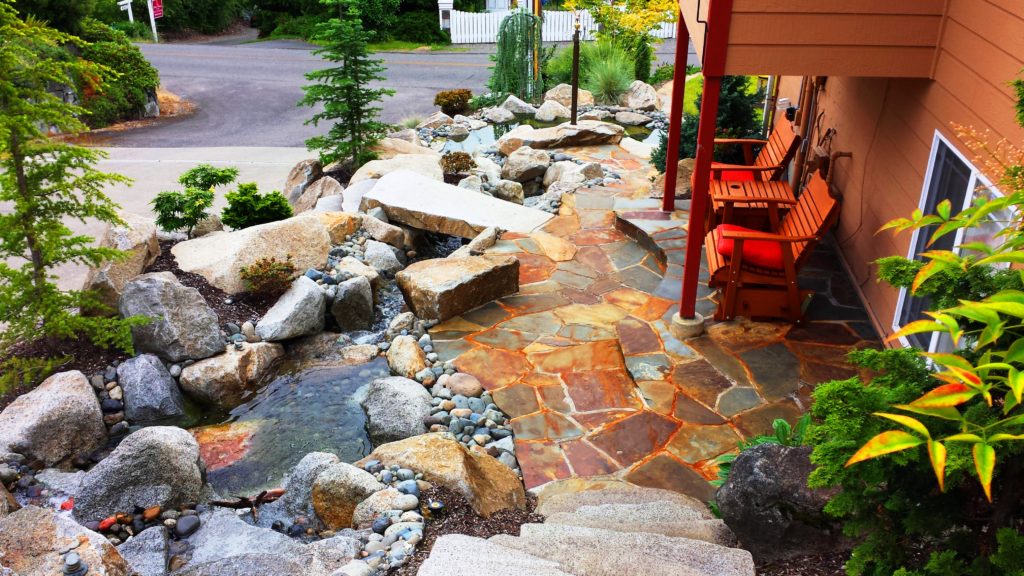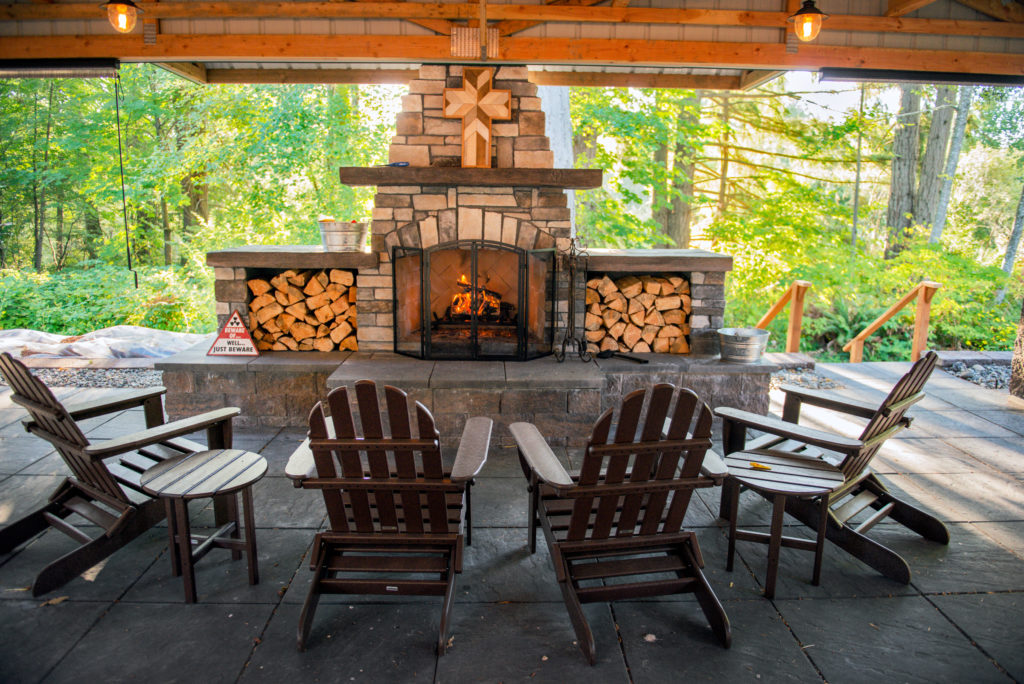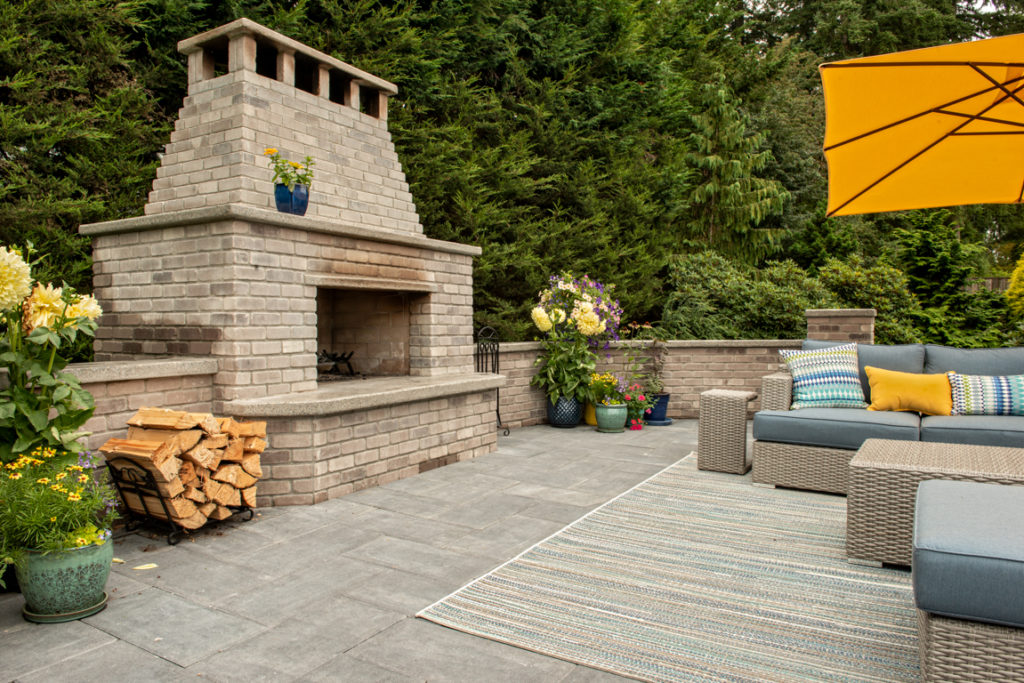Do you notice that you feel calmer when you go outside, especially if you’re able to walk in the park or be around natural elements? Data shows most people feel calmer when surrounded by the natural world. Unfortunately, we have become more separated from nature (and each other) due to the global pandemic.
Most people these days are separated from nature. In fact, 54% of people worldwide live in urban settings, and that’s expected to grow to 66% by 2050. Not only that, but people are typically spending 93% of their time indoors! This isn’t helping any of us find serenity and calm.
As we continue to manage the challenges of being stuck at home, we find ourselves needing a connection to nature more than ever. How do we go about doing this you ask? The answer is simple. Let’s bring nature inside. Bringing nature to the places people live and work in has proven to boost moods, create an increase in productivity and reduce stress levels. This is where biophilic design comes into play.
Masonry elements can help bring a sense of nature to the interior and exterior of a building. We’re going to look at what biophilic design is and how to implement it, focusing on the role that masonry can play.
See Outdoor Living Project Gallery
What is biophilic design?
Biopholia is defined as an affinity to nature. It is based on the belief that humans have an inherent love of nature and our health could suffer if we don’t connect with it on a regular basis. Science has found that exposure to nature helps with stress relief and increases productivity. Roger Ulrich performed a famous study comparing the recovery rates of hospital patients with and without a view to nature. Patients with a view recovered faster than those didn’t.
Biophilic design is the practice of bringing nature into building design. It includes increasing the presence of natural elements in buildings, as well as access to natural views. This can be done by including natural materials in construction and focusing on views of nature when locating windows and outside features.
How to implement biophilic design
There are several ways to include nature in a building’s design. They range from including natural materials to providing views of nature. We’ll look at a few of the key ways to include nature in design, and explore how masonry can help with each of them.
Views of nature
Creating views of nature from inside a building involves the positioning of windows as well as natural features. Designers need to look at where windows are placed in relation to exterior features such as landscaping areas, water features, and other natural areas. Natural elements can be located near the building, as well as far away, to provide a depth of experience.
Views can also be curated inside the building. This may include the use of plants, water features, and indoor landscapes. These areas allow occupants to have a personal experience with nature without stepping outside.
Views allow occupants somewhere to shift their attention to relax their eyes and relieve brain fatigue. The natural areas don’t have to be large in order to be effective. Even a small piece of nature, such as a plant or rock, can offer a moment of relief.
Masonry, hardscapes, and stone can be used to provide interest to existing natural views by incorporating them into outdoor walls, patios, seating areas, and landscaping. When combined with plants and trees, outdoor areas can be a respite from indoor life and offer interesting views for those on the inside.
Hearing and seeing water
Do you find the sound of running water soothing? If so, you’re not alone. Research has shown that water reduces stress, increases feelings of tranquility, and lowers heart rate and blood pressure. Biophilic design attempts to bring both the sight and sound of running water to the indoors. This is often done by creating indoor water features.
Flagstone, basalt columns, and boulders can be used to create interesting formations for water features and in landscaping. Their natural appearance embellishes that of the surrounding surfaces, creating an oasis on the inside. With a wide color palette to choose from, they can be selected to match the interior decor.

Use natural materials
The use of natural materials, like stone, slate, and clay, improves the connection with nature. Natural materials mimic the patterns found in nature, which are soothing to stressed-out building occupants. The use of natural colors is often touted as providing stress relief for occupants.
Interior design can include the use of stone and brick for walls, seating areas, hearths, and chimneys. These features allow the natural materials to take center stage, separating them from the rest of the interior. These focal areas draw attention, increasing the stress-reducing ability of the natural materials.
Exterior areas, like patios, amphitheaters, building veneers, and seating walls, can be similarly positioned to offer a view from the inside, as well as a chance to interact with nature when occupants go outside.
Use natural patterns
There are natural patterns that are found in features of nature that can be replicated in building construction to soothe building occupants. These forms and patterns are called biomorphic. There are very few right angles and straight lines in nature. Biophilic design patterns vary, for example the Golden Angle, which measures approximately 137.5 degrees, is the angle between florets in some flowers. Curves and angles of 120 degrees are frequently found in other elements of nature.
Mimicking natural patterns like spirals, fractal geometries, angles, lines, rock formations, and site lines provides a sense of order to the interior of the building. The patterns can be easily duplicated with masonry elements and stones. Patios can be laid out in a spiral that mimics a seashell or can follow the landscape outline of a popular natural wonder.
Create areas of refuge
Areas of refuge are protected areas where people can remove themselves from the flow of traffic for a moment of quiet and reflection. These areas must be protected from behind and overhead to provide this sense of refuge.
Walls, seating areas, and patios can all be designed with areas of refuge included. Masonry and stone elements provide the perfect way to create the protection needed.
Incorporating masonry into design
Masonry and stone can be used in most any building type, providing an instant connection to the natural world while lowering stress and increasing productivity.
Whether it’s indoors or outdoors, using masonry and stone is an easy way to include biophilic design in your project. An accent brick wall or a secluded patio will provide the connection to nature that we all seek.




